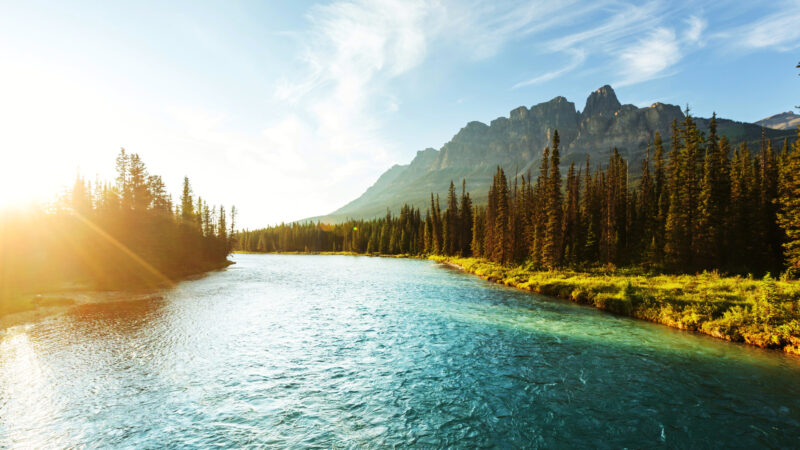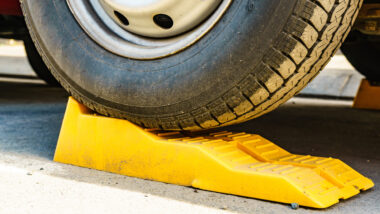Table of Contents Show
Did you know the United States isn’t the only country with national parks? In fact, we got the idea of a national park service from the Canadians.
The world’s first national parks service was the Canadian Dominion Parks Branch, established in 1911. Today, Parks Canada, a government agency that evolved from the earlier Dominion Parks Branch, administers the national parks in the country.
So let’s learn more about the beautiful protected areas of our northern neighbor. With just a cross of the border, you can enjoy the pristine landscape and cultural heritage of the Canadian national parks!
How Many National Parks Are In Canada?
In November 1885, the Canada National Parks System began when the federal government designated the Cave and Basin Hot Springs area for public use.
In June 1887, Banff National Park was created to protect this region’s mountains, hot springs, grizzly bears, and wolves.
Since then, the Canada National Parks System has grown to include 37 national parks and 10 national park reserves, protecting over 129,000 square miles of Canada’s land.
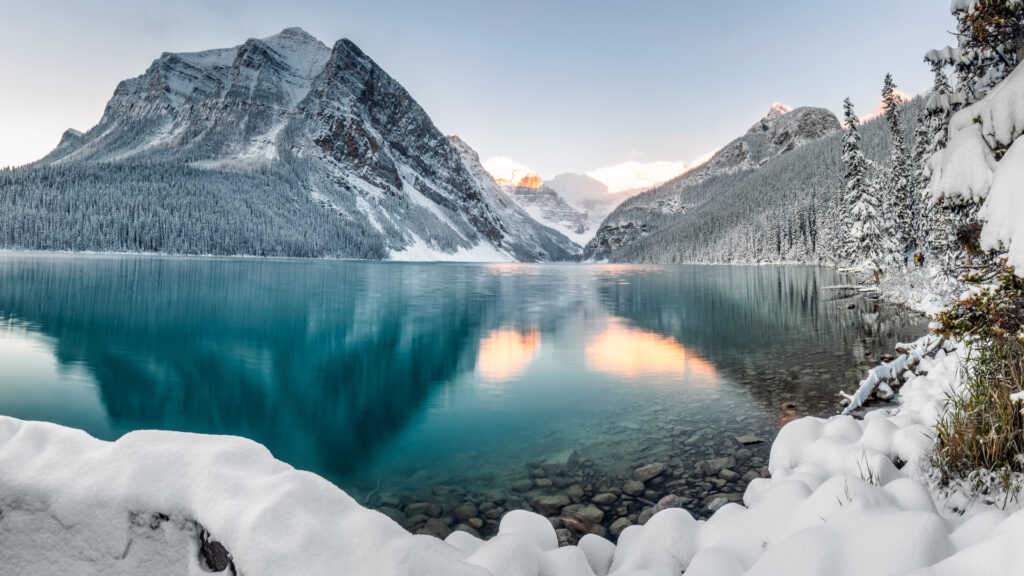
What’s the Difference Between a Canada National Park and a Canada National Reserve?
The United States has specific sites designated as national parks and other sites designated as national parks and preserves. Most of these preserves are in Alaska. A preserve protects certain resources, but activities like hunting and fishing may be permitted.
In Canada, a national park reserve is “an area that is managed like a national park but is subject to one or more Indigenous land claims.
These land claims are being negotiated between the federal and Indigenous governments. Indigenous peoples continue to use the land for traditional hunting, fishing, and trapping.”
Permitting native people to continue their way of life instead of disallowing them to live off the land they’ve inhabited for thousands of years makes a national reserve different from a national park.
Who Manages Canada’s National Parks?
Park Canada evolved out of the Dominion Parks Branch from the early 1900s. In 1998, Parliament made Parks Canada, a branch within the government, a separate agency.
In recent years, Parks Canada has worked to establish parks in unrepresented natural regions and collaborated with Indigenous communities to establish new ones.
Like the National Park Service in the United States, Parks Canada protects nationally significant areas of natural and cultural heritage. The agency also helps foster an understanding, appreciation, and enjoyment of these places for present and future generations.
Is Camping Allowed in Canadian National Parks?
There are all types of camping allowed in national parks throughout Canada. You can enjoy backcountry camping in Riding Mountain National Park or yurt camping in Bruce Peninsula National Park.
Or you can make reservations at Rocky Mountain House National Historic Site to camp under the stars in a teepee. Some may visit Mount Revelstoke National Park to sleep in a cozy MicrOcube with a window into the wilderness.
You can go RV, tent, cabin, group camping, overnight mooring, and more at select locations. You can find all the information on camping in national parks in Canada online.
Keep in Mind: So why is There a US National Park in Canada? Let’s find out!
What’s the Most-Visited National Park in Canada?
Banff National Park is Canada’s oldest and most visited. The beautiful setting of the Rocky Mountains glistens with glaciers and ice fields.
It also contains the Cave and Basin National Historic Site. Additionally, visitors love the stunning turquoise lakes of Banff Upper Hot Springs. Over four million people bask in the beauty of Banff each year.
Visitors enjoy cross-country skiing, snowshoeing, cycling, boating, hiking, fishing, scuba diving, swimming, wildlife viewing, and paddling, depending on the season.
Furthermore, you can obtain a national park camping permit and entry pass. Guests can reserve a stay in an oTENTik unit, a mix of a tent and an A-frame cabin. You can also stay at organized or backcountry campsites.
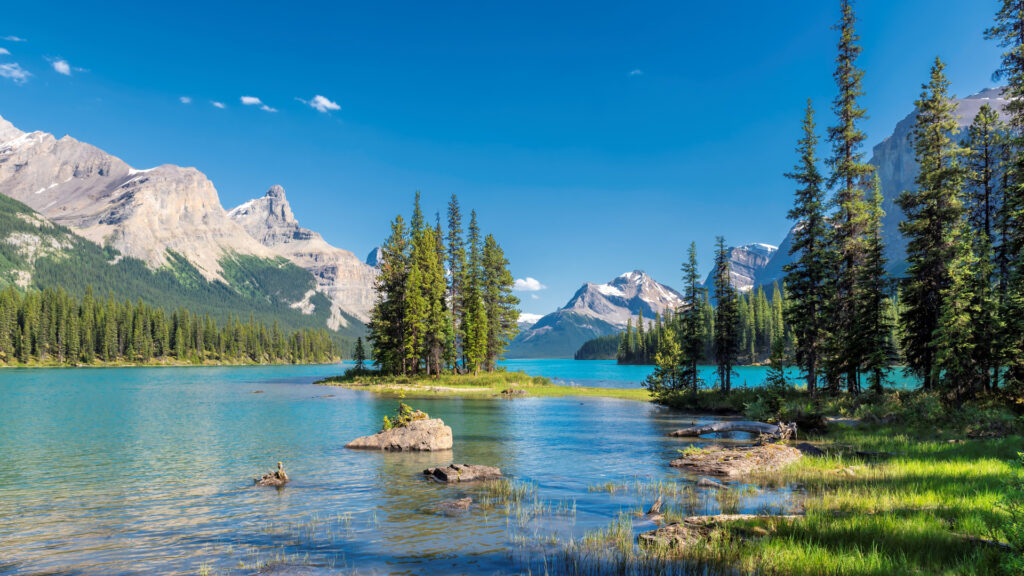
What Canadian National Parks Are Near the United States?
Dozens of national parks in Canada lie near the United States border. Many Americans love visiting Banff just as much as Yellowstone or Glacier National Park.
Banff is about four hours north of the border from Montana. But you can visit other lesser-known Canadian national parks closer to the United States.
Grasslands National Park and Waterton Lakes National Park are less than an hour from the Montana border.
Additionally, Gulf Islands National Park Reserve in British Columbia is just off the coast of Vancouver Island. It’s a stone’s throw across the water from the Northwest islands of Washington state. You can also visit Pacific Rim National Park Reserve on Vancouver Island.
Pukaskwa National Park in Ontario sits on Lake Superior, directly across from Copper Harbor in Michigan. Bruce Peninsula, Point Pelee, and Rouge National Urban Park sit along the Great Lakes.
Keep in Mind: If you’re looking for a four-season RV, then these Canadian RVs That Should Be on Your Radar!
Other Sites Managed by Parks Canada
In addition to the national parks and national park reserves, Parks Canada also manages and protects national historic sites, marine conservation areas, and urban parks.
Canada has over 1,000 national historic sites throughout every province and territory, but Parks Canada only administers 171 of them. They range from sacred spaces to archaeological sites to battlefields.
Currently, Canada has five national marine conservation areas, protecting over 47,000 square miles of marine and freshwater ecosystems in the Atlantic, Pacific, and Arctic oceans and the Great Lakes.
In the next five years, Parks Canada hopes to work with Indigenous communities to establish 10 new marine and four new freshwater NMCAs.
Finally, Parks Canada wants to create a network of national urban parks with hopes of expanding the program to include fifteen locations.
Rouge National Urban Park is Canada’s first of its kind. The government invested $130 million to provide these green spaces for all Canadians.
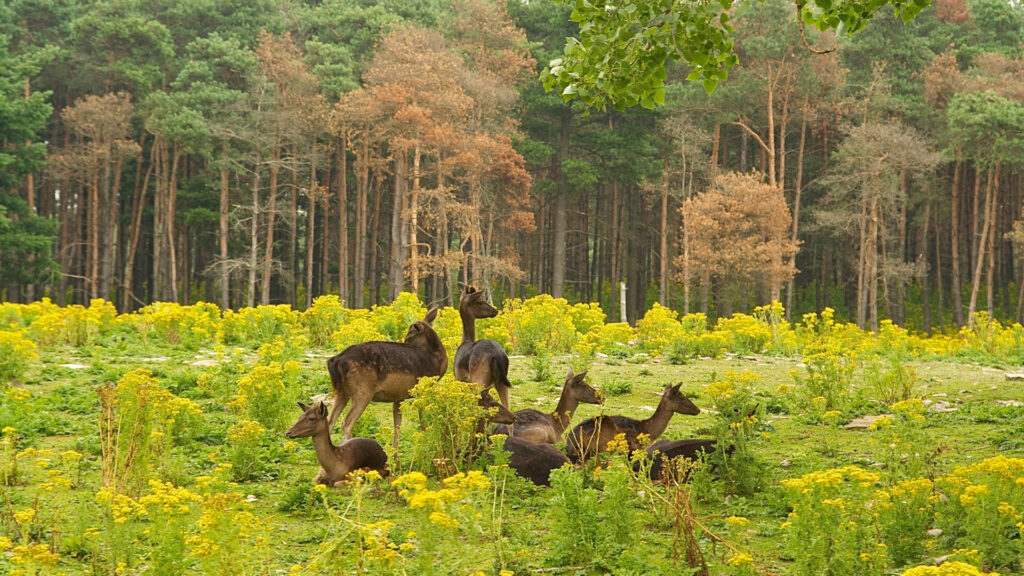
Enjoy Beautiful Canada on Your Next Road Trip Journey
The next time you plan a road trip through the Northeast, cut into southeast Canada and explore the dozens of historic sites near Montreal.
Or cross over the St. Clair River at the Michigan border to visit Battle Hill or Point Clark Lighthouse National Historic Sites.
Once you finish visiting Glacier National Park, cross the border into Alberta and marvel at the beauty of the mountain vistas and cascading waterfalls in Waterton Lakes National Park.
After visiting North Cascades National Park and Olympic National Park in northwest Washington state, you can cross the waters into British Columbia, walk around three historic sites, and explore two Canadian national parks just across the way.
Which national park in Canada will you visit first?




